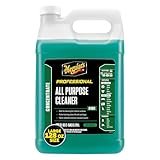Automotive AC Pressure Chart Explained

Ever cranked up your car’s AC on a hot day, only to get a blast of warm air? Yeah, that’s frustrating. Your AC system isn’t just about blowing cold air, it’s a pressure-driven system that needs the right balance to work properly. If the pressure is off, so is your AC’s performance.
So, what is an automotive ac pressure chart? It’s a simple guide that helps you understand whether your AC system is running at the correct pressure. By comparing your high-side and low-side readings with the chart, you can tell if you need a recharge, repair, or just some basic maintenance.
In this article, we’ll break down how to read an AC pressure chart, what different pressure readings mean, and common AC pressure problems and their fixes. By the end, you’ll know exactly how to diagnose AC issues like a pro and avoid expensive repairs.
What Is an Automotive AC Pressure Chart?
Think of an automotive air conditioning pressure temperature chart like a health checkup for your car’s air conditioning. It tells you if your AC system is doing fine or if something’s off. It works by measuring pressure levels on both the high and low sides of the system. If the readings are too high, too low, or just weird, you’ve got a problem.
Here’s the deal:
- The low-side pressure tells you how well the refrigerant is absorbing heat from your cabin.
- The high-side pressure shows how efficiently the system is compressing and releasing that heat.
If these numbers don’t match what they should be for the current temperature, your AC isn’t happy, and neither are you when you’re sweating in traffic.
How to Read an AC Pressure Chart?
Reading an AC pressure chart isn’t rocket science, but you do need to understand what you’re looking at. You’ve got two pressure values—one for the low side (suction line) and one for the high side (discharge line).
- Low-Side Pressure: Normally between 25-40 PSI (depending on outside temperature). Too low means low refrigerant or a compressor issue. Too high indicates a restriction or too much refrigerant.
- High-Side Pressure: Should be around 150-250 PSI, but it varies. If it’s too high, the system might be overfilled, or the condenser is blocked. If it’s too low, your compressor isn’t doing its job.
Match the readings to the ambient temperature. A 90°F day will have different “normal” pressures than a 60°F evening. That’s why using an AC pressure chart is critical—it keeps you from guessing.
Understanding Pressure Readings
I’ll be simply explaining this. Have a look.
- Low pressure = Not enough refrigerant or a weak compressor. AC blows warm air.
- High pressure = Too much refrigerant or a clog in the system. AC struggles to cool, or worse, shuts off.
Different refrigerants have different pressure ranges. Here’s what you should expect:
|
Ambient Temperature (°F) |
R134a Low (PSI) |
R134a High (PSI) |
R1234yf Low (PSI) |
R1234yf High (PSI) |
|
60°F |
30-32 |
135-150 |
25-27 |
125-140 |
|
75°F |
35-40 |
175-210 |
30-35 |
160-190 |
|
90°F |
45-50 |
250-270 |
40-45 |
220-250 |
Use this as your cheat sheet whenever you’re diagnosing AC issues.
Common AC Pressure Problems & What They Mean
Sometimes, your AC just stops playing nice. If your pressure readings are off, here’s what might be happening:
1. Low Pressure on Both Sides
- What’s Wrong? Probably a refrigerant leak or your compressor is struggling.
- Fix It: Recharge the refrigerant and check for leaks. No leaks? Your compressor might be dying.
2. High Pressure on Both Sides
- What’s Wrong? Your system might be overcharged, or there’s a blocked condenser.
- Fix It: Release some refrigerant (carefully) or clean/replace the condenser.
3. Low High-Side, High Low-Side
- What’s Wrong? The expansion valve isn’t working, or your compressor is failing.
- Fix It: Check and replace the expansion valve. If that doesn’t work, the compressor might need replacing.
4. High High-Side, Low Low-Side
- What’s Wrong? There’s a blockage somewhere, likely the orifice tube or expansion valve.
- Fix It: Flush the system, replace the clogged part, and recharge the refrigerant.
How to Check Your AC Pressure Correctly?
Checking your AC pressure isn’t hard, but you need the right tools and a little patience. If you rush it, you might end up with a bigger problem than you started with. Here’s how to do it right.
Step 1: Get an AC Manifold Gauge Set
You can’t check AC pressure without a manifold gauge set. It hooks up to your system and tells you what’s going on inside. Don’t try to eyeball it—guesswork and refrigerant don’t mix well.
Step 2: Locate the Service Ports
Your AC system has two ports—low side (blue) and high side (red). The low side is usually on the larger line, while the high side sits on the smaller one. Hook up the gauges accordingly.
Step 3: Read the Pressure
Start your car, crank the AC to max, and let it run for a few minutes. Then check the readings:
- Low-side pressure (blue gauge) should be between 25-40 PSI, depending on the temperature outside.
- High-side pressure (red gauge) should be between 150-250 PSI.
Compare your numbers to an AC pressure chart. If they’re off, you’ve got an issue.
Please don’t forget to take these following precautions.
- Wear gloves and goggles. Refrigerant can cause frostbite if it touches your skin.
- Don’t overcharge the system. More refrigerant does not mean colder air – it just means higher pressure and potential damage.
- Never open the high-side port when the AC is running. The pressure can blow the refrigerant straight into your face.
If you’re not confident in what you’re doing, stop. AC systems aren’t like refilling windshield wiper fluid, you can mess them up if you’re not careful.
When to Seek Professional Help?
Sometimes, a DIY fix isn’t the answer. If your AC issue is bigger than just a refrigerant top-up, it’s best to call a mechanic. Here’s when to put the gauges down and step away.
Signs Your AC Needs a Pro
- Your AC blows warm air even after a recharge. This could mean a bad compressor, clogged expansion valve, or a major leak.
- You hear weird noises when the AC is on. A clicking, hissing, or grinding sound usually means a failing compressor or a leaking line.
- You see oil or refrigerant stains near AC components. That’s a leak, and it won’t fix itself.
Why DIY Fixes Aren’t Always the Best Option
- Refrigerant isn’t just “plug and play.” If your system is low, you need to find the leak, not just add more gas.
- Messing up can cost you. A bad recharge can lead to damaged components, higher repair bills, or even a broken AC system.
- Modern AC systems are complicated. If your car uses R1234yf refrigerant, you need special equipment—not just a $30 can from the store.
If you’re dealing with electrical issues, major leaks, or a dead compressor, take your car to a professional. Some jobs are worth paying for, especially when a mistake can leave you sweating in summer traffic.
Final Thoughts
Knowing your AC pressure readings can save you time, money, and a lot of sweaty frustration. Instead of guessing what’s wrong, you’ll have a clear idea of whether you need a simple recharge or a trip to the mechanic.
If your AC isn’t cooling like it should, don’t panic. Check the chart, compare the numbers, and troubleshoot smartly. A little knowledge can go a long way in keeping your car’s AC running ice-cold, even in the hottest weather.






